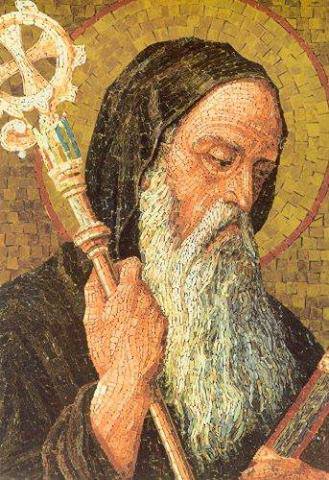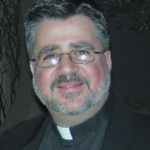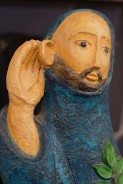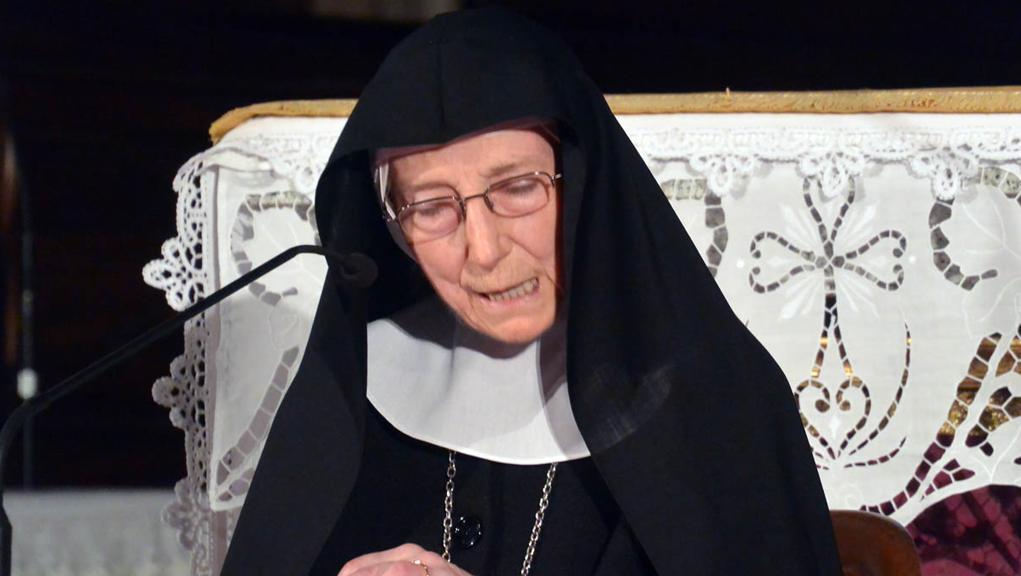 Some Lenten meditation. While the Bishop’s letter speaks directly to the vocations monks and nuns there is much wisdom that oblates and members of Communion and Liberation can draw on.
Some Lenten meditation. While the Bishop’s letter speaks directly to the vocations monks and nuns there is much wisdom that oblates and members of Communion and Liberation can draw on.
Thanks to Dom Thomas of Marmion Abbey who works at the Pontifical Greek College, Rome.
A beautiful letter by Bishop Aiello of Avellino
Monastics’ gift to Italy
Letter to the nuns and monks:
We turn to you, sisters and brother monks, to ask for your prayers, to support your raised arms, like those of Moses on the mountain, in this time of particular danger and unease for our communities: by your persistent prayerful intercession, we acquire resilience and future victory.
You are the only ones who do not move a facial muscle in the face of the rain of decrees and restrictive measures that rain on us these days because what we are asked for, for some time you have always done it and what we suffer you have chosen.
Teach us the art of being content living with nothing, in a small space, without going out, yet engaged in internal journeys that do not need planes and trains.
“Give us your oil” to understand that the spirit cannot be imprisoned, and the narrower the space, the wider the skies open.
Reassure us that you can live even for a short time and be joyful, remember that poverty is the unavoidable condition of every being because, as Don Primo Mazzolari said, “being a man is enough to be a poor man”.
Give us back the ability to savor the little things you who smile of a blooming lilac at the cell window and greet a swallow that comes to say that spring has come, you who are moved by a pain and still exulted by the miracle of the bread that is baked in the oven.
Tell us that it is possible to be together without being crowded together, to correspond from afar, to kiss without touching each other, to touch each other with the caress of a look or a smile, or simply … a gaze at each other.
Remind us that a word is important if it is reflected upon, ruminated within the heart for a period of time, leavened in the soul’s recesses, seen blooming on the lips of another, called a low voice, not shouted or cutting because of hurt.
But, even more, teach us the art of silence, of the light that rests on the windowsill, of the sun rising “as a bridegroom coming out of the bridal room” or setting “in the sky that tinges with fire”, of the quiet of the evening, of the candle lit that casts shadows on the walls of the choir.
Tell us that it is possible to wait for a hug even for a lifetime because “there is a time to embrace and a time to refrain from embraces,” says Qoelet. President Conte said that at the end of this time of danger and restrictions we will still embrace each other in the feast, for you there are still twenty, thirty, forty years to wait …
Educate us to do things slowly, solemnly, without haste, paying attention to details because every day is a miracle, every meeting a gift, every step a step in the throne room, the movement of a dance or a symphony.
Whisper to us that it is important to wait, postpone a kiss, a gift, a caress, a word, because waiting for a feast increases its brilliance and “the best is yet to come”.
Help us understand that an accident can be a grace and a sorrow can hide a gift, a departure can increase affection and a distance that can finally lead us to encounter and communion.
To you, teachers and masters of the hidden and happy life, we entrust our uneasiness, our fears, our remorse, our missed appointments with God who always awaits us, you take everything in your prayer and give it back to us in joy, in a bouquet of flowers and peaceful days. Amen.
Lettera alle monache e ai monaci:
Ci rivolgiamo a voi, sorelle e fratelli monaci, per chiedere la vostra preghiera, per sostenere le vostre braccia alzate, come quelle di Mosè sul monte, in questo tempo di particolare pericolo e disagio per le nostre comunità provate: dalla vostra resistenza nell’intercessione dipende la nostra resilienza e la futura vittoria.
Siete gli unici a non muovere un muscolo facciale dinnanzi alla pioggia di decreti e provvedimenti restrittivi che ci piovono addosso in questi giorni perché ciò che ci viene chiesto per alcun tempo voi lo fate già da sempre e ciò che noi subiamo voi lo avete scelto.
Insegnateci l’arte di vivere contenti di niente, in un piccolo spazio, senza uscire, eppure impegnati in viaggi interiori che non hanno bisogno di aerei e di treni.
“Dateci del vostro olio” per capire che lo spirito non può essere imprigionato, e più angusto è lo spazio più ampi si aprono i cieli.
Rassicurateci che si può vivere anche di poco ed essere nella gioia, ricordateci che la povertà è la condizione ineludibile di ogni essere perché, come diceva don Primo Mazzolari, “basta essere uomo per essere un pover’uomo”.
Ridateci il gusto delle piccole cose voi che sorridete di un lillà fiorito alla finestra della cella e salutate una rondine che viene a dire che primavera è arrivata, voi che vi commuovete per un dolore e ancora esultate per il miracolo del pane che si indora nel forno.
Diteci che è possibile essere insieme senza essere ammassati, corrispondere da lontano, baciarsi senza toccarsi, sfiorarsi con la carezza di uno sguardo o di un sorriso, semplicemente… guardarsi.
Ricordateci che la parola è importante se pensata, tornita a lungo nel cuore, fatta lievitare nella madia dell’anima, guardata fiorire sulle labbra di un altro, detta sottovoce, non gridata e affilata per ferire. Ma, ancor più insegnateci l’arte del silenzio, della luce che si poggia sul davanzale, del sole che sorge “come sposo che esce dalla stanza nuziale” o tramonta “nel cielo che tingi di fuoco”, della quiete della sera, della candela accesa che getta ombre sulle pareti del coro.
Raccontateci che è possibile attendere un abbraccio anche tutta una vita perché “c’è un tempo per abbracciare e un tempo per astenersi dagli abbracci” dice Qoelet. Il Presidente Conte ha detto che alla fine di questo tempo di pericolo e di restrizioni ci abbracceremo ancora nella festa, per voi ci sono ancora venti, trenta, quaranta anni da aspettare…
Educateci a fare le cose lentamente, con solennità, senza correre, facendo attenzione ai particolari perché ogni giorno è un miracolo, ogni incontro un dono, ogni passo un incedere nella sala del trono, il movimento di una danza o di una sinfonia.
Sussurrateci che è importante aspettare, rimandare un bacio, un dono, una carezza, una parola, perché l’attesa di una festa ne aumenta la luce e “il meglio deve ancora venire”.
Aiutateci a capire che un incidente può essere una grazia e un dispiacere può nascondere un dono, una partenza può accrescere l’affetto e una lontananza farci finalmente incontrare.
A voi, maestre e maestri della vita nascosta e felice, affidiamo il nostro disagio, le nostre paure, i nostri rimorsi, i nostri mancati appuntamenti con Dio che sempre ci attende, voi prendete tutto nella vostra preghiera e restituitecelo in gioia, in bouquet di fiori e giorni di pace. Amen
mons Aiello,
Vescovo di Avellino







